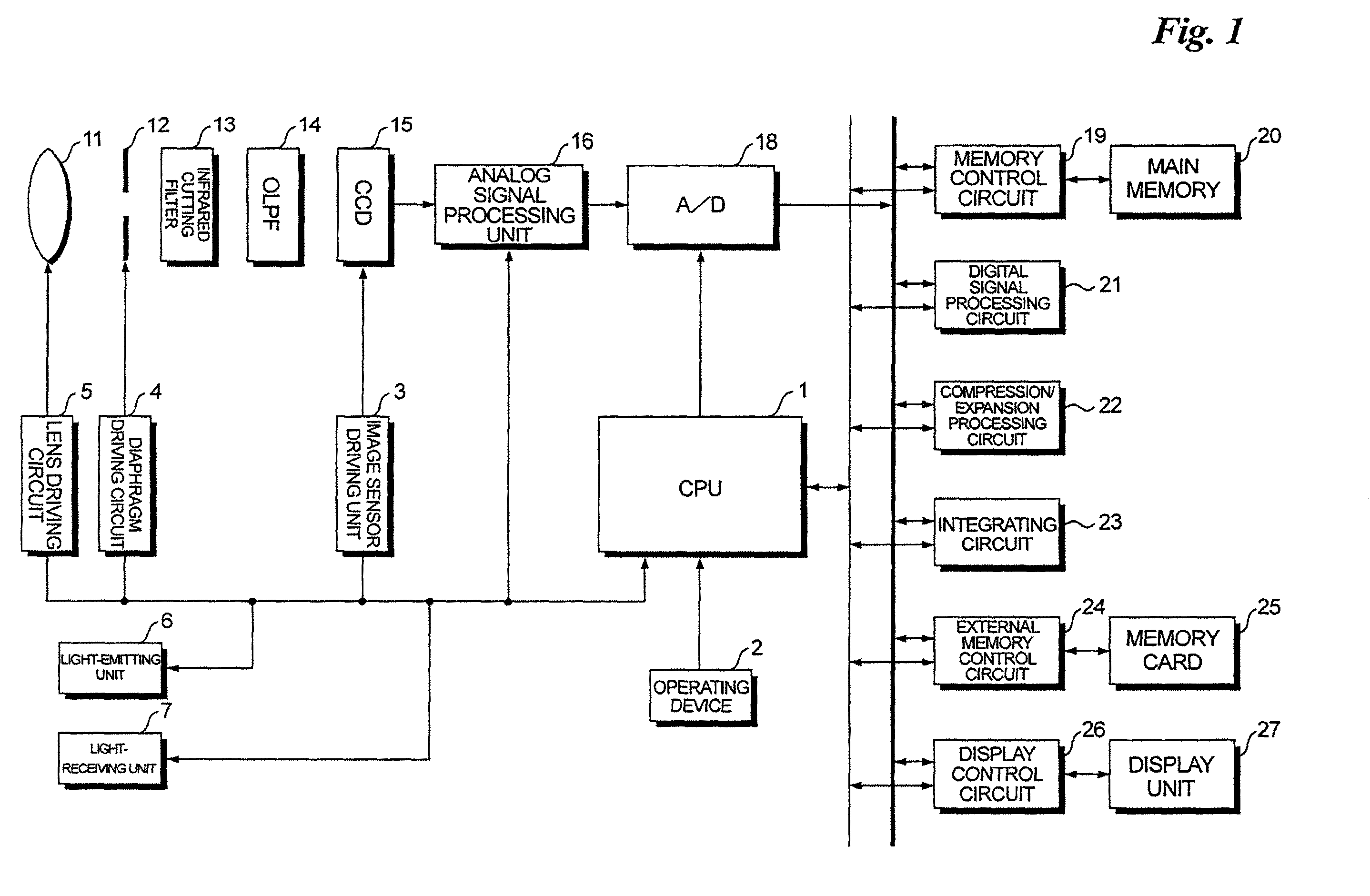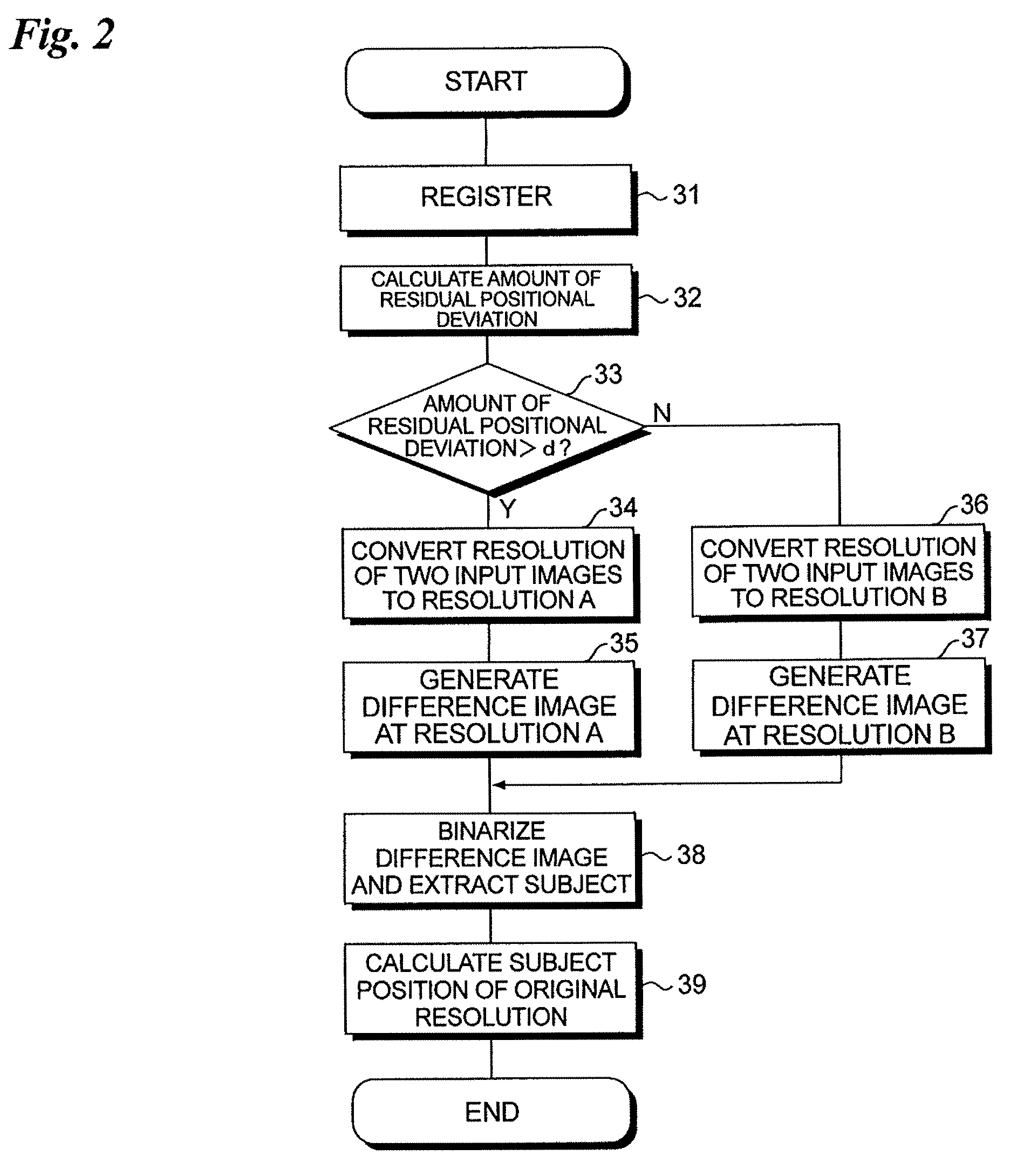Motion detection apparatus and method
- Summary
- Abstract
- Description
- Claims
- Application Information
AI Technical Summary
Benefits of technology
Problems solved by technology
Method used
Image
Examples
second embodiment
[0060]FIG. 5 is a flowchart illustrating motion detection processing according to a second embodiment of the present invention. This flowchart differs from the flowchart of the first embodiment shown in FIG. 2 in that with regard to the input images 81 and 82, low-resolution images 81A, 82A of resolution A, low-resolution images 81B, 82B of resolution B are created beforehand, and a difference image of resolution A calculated from the low-resolution images 81A, 82A and a difference image of resolution B calculated from the low-resolution images 81B, 82B are created (steps 41, 42). The difference image of resolution A and the difference image of resolution B are stored temporarily in the main memory 20.
[0061]If the amount of residual positional deviation is greater than the threshold value d, then the difference image of resolution A created beforehand is selected (read out of the main memory 20) (“YES” at step 33; step 43) and the subject (moving body) is extracted from the differen...
third embodiment
[0063]FIG. 6 is a flowchart illustrating motion detection processing according to a third embodiment, and FIG. 7 illustrates motion detection processing of the third embodiment in the form of images.
[0064]Motion detection processing according to the third embodiment differs from the processing of the first and second embodiments in that the input images 81, 82 are divided into a plurality of areas and a difference image is created for every divided area. Processing steps in FIG. 6 identical with those of the flowchart (FIG. 2) of motion detection processing of the first embodiment are designated by like step numbers and need not be described again.
[0065]FIG. 8, which corresponds to FIG. 4, illustrates, by the directions and lengths of arrows, the sizes and directions of amounts of residual positional deviation at a plurality of corresponding points in a fusion image 80 obtained by superimposing the two input images 81 and 82 after the registration thereof. FIG. 8 illustrates an exam...
fourth embodiment
[0072]FIG. 9 is a flowchart illustrating motion detection processing according to a fourth embodiment of the present invention. This flowchart differs from the flowchart of the third embodiment shown in FIG. 6 in that the binarization threshold value used in creating the binarized difference images used in detecting the subject (moving body) differs between a value applied to the difference image created using resolution A and a value applied to the difference image creating using the resolution B (steps 61, 62, 63). Processing steps in FIG. 9 identical with those of the flowchart of FIG. 6 are designated by like step numbers and need not be described again.
[0073]In subject (moving-body) detection processing, pixels (a region) having a difference value greater than that of a prescribed binarization threshold value in the difference image are detected (extracted) as pixels (a region) representing the subject (moving body). The smaller the binarization threshold value, the higher the ...
PUM
 Login to View More
Login to View More Abstract
Description
Claims
Application Information
 Login to View More
Login to View More - R&D
- Intellectual Property
- Life Sciences
- Materials
- Tech Scout
- Unparalleled Data Quality
- Higher Quality Content
- 60% Fewer Hallucinations
Browse by: Latest US Patents, China's latest patents, Technical Efficacy Thesaurus, Application Domain, Technology Topic, Popular Technical Reports.
© 2025 PatSnap. All rights reserved.Legal|Privacy policy|Modern Slavery Act Transparency Statement|Sitemap|About US| Contact US: help@patsnap.com



